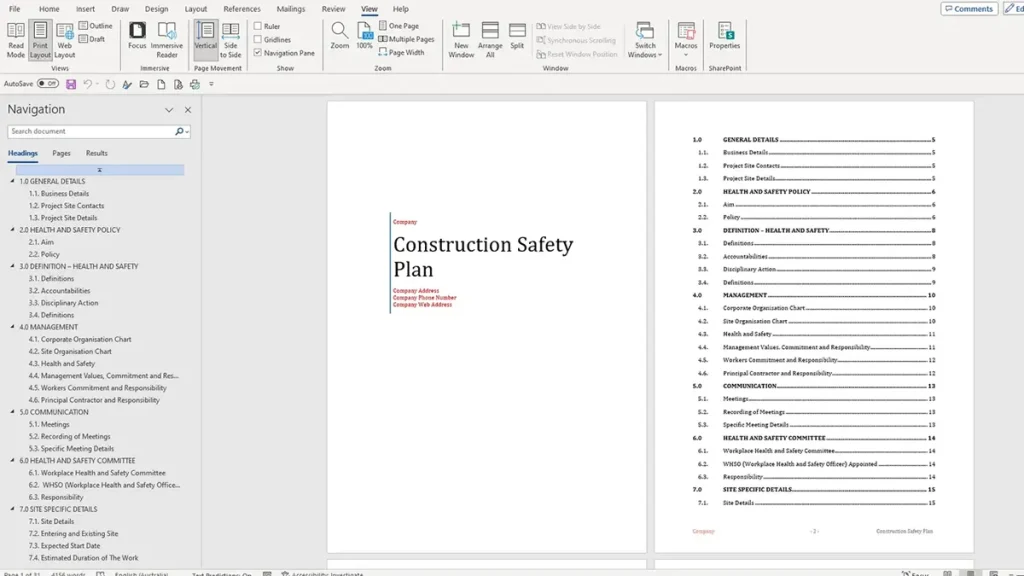Business dress code refers to a set of guidelines and standards established by a company or organization to dictate how employees should dress in the workplace. The specific dress code can vary widely depending on the industry, company culture, and the nature of the job.
What type of small or medium business are you running? If you and your staff are meeting with customers or clients how are you dressed? Remember that first impressions make a huge difference.
Create a Policy and Procedure Manual Template Fast using MS Word!
Policy and Procedure Manual Template+ Free Bonus Templates

Table of Contents
Business Dress Code
First Impressions Count
If you go to an interview for a job – how do you present yourself? Shirt hanging out? Hair untidy?
You the business owner – take a look in the mirror. How do you dress? Your staff are looking at you as a role model even if you don’t want them to.
That means the way you dress is important. You are setting the standards in your business without even thinking about it.
Outperform Your Competition
Set a Dress Code for Professionalism
If you are a small or medium business and want your business to outperform in the market place one of the first things you must do is set a dress code.
Obviously your dress code is going to depend on your type of business, however regardless of what you do, your dress code needs to ‘smash it’ if you want to outperform your competitors.
Type of Business
Is your business an outdoorsy type?
Do you work outside the office? In the field? If so, look closely at your workers and dress code.
It needs to be neat and tidy. Custom made attire with business logo. Just like the old school days. It isn’t hard to do, and will cost you a bit, however it is going to up the standard of the presentation of your business and this is what you are trying to achieve.
Are you in an office?
If so, a uniform might be applicable here too. Business attire can be customized to suit. Make it look smart and then charge your clients more.
After all, this is why you are in business – to make a profit.
Set the standards in your business and include the dress code in your procedure manual. It could look something like this.
Dress Code Procedure (Example)
As an employee of [Company Name], we expect you to present a clean appearance when you represent us, whether that is in, or outside of the business.
Management and those employees who come in contact with our Clients are expected to dress in accepted corporate tradition.
It is just as essential that you act in a professional manner and extend the highest courtesy to co-workers, visitors, customers, vendors and clients. A cheerful and positive attitude is essential to our commitment to extraordinary customer service and impeccable quality.
Set your standards in your business and lead the way.
Appropriate Professional Business Dress Code
Three key points for appropriate business dress code.
Professional Attire
Employees should wear professional and well-tailored clothing, such as suits, dress shirts, blouses, skirts, or slacks. The attire should be clean, neatly pressed, and in good condition. Avoid overly casual items like jeans, shorts, or t-shirts unless specified in the company’s dress code policy.
Modesty and Neatness
Dressing modestly is important in a business setting. Clothes should not be too revealing or provocative. Avoid overly flashy or distracting accessories. Neatness is crucial, so ensure that clothes are well-fitted and not wrinkled. Personal hygiene, including grooming and cleanliness, is also a part of this point.
Adapt to the Work Environment
The dress code might vary based on the industry and specific company culture. Some workplaces may require formal business attire, while others might have a business casual or smart casual dress code. It’s essential to adapt to the particular expectations of your workplace. When in doubt, it’s better to err on the side of being slightly more formal.
Always remember to check your company’s dress code policy, as it might have specific guidelines and expectations tailored to the organization’s culture and industry.
Procedures for all Areas of business
Dress code procedure is just one area of business that requires procedures and standards. If you need a procedure manual in your business then review our Procedure Manual Template.
Create a Policy and Procedure Manual Template Fast using MS Word!
Policy and Procedure Manual Template+ Free Bonus Templates

FAQ’s for a Business Dress Code Procedure
What is considered appropriate business attire?
Appropriate business attire typically includes professional clothing that is neat, clean, and suitable for a workplace environment. Examples include tailored suits, dress shirts, blouses, dress pants, skirts of appropriate length, and closed-toe shoes. Casual or overly informal clothing, such as ripped jeans, t-shirts with logos, or flip-flops, are generally not acceptable.
Are there exceptions for casual dress days?
Yes. On designated casual dress days, employees may wear more relaxed clothing while still maintaining a professional appearance. Clothing should be clean, tidy, and free from offensive graphics or slogans. Specific guidance for casual dress days will be communicated by management.
How should I dress for client meetings or external events?
When meeting clients or attending external events, employees are expected to follow a professional business dress standard regardless of internal dress code policies. This ensures the company’s image remains professional and consistent.
Can I wear religious or cultural attire?
Yes. The dress code respects and accommodates religious, cultural, or medical requirements. Employees should inform HR if they require adjustments to the standard dress code due to religious or cultural considerations.
What happens if I do not comply with the dress code?
Non-compliance may result in a reminder from management or HR. Repeated or serious breaches could lead to further disciplinary action. The goal is to maintain a professional and respectful workplace for all employees.
Any Comments?
We’d love to hear from you! Have thoughts, questions, or experiences about workplace dress codes? Share them in the comments below. Your insights can help others navigate professional attire while keeping it practical, stylish, and inclusive.
Let’s start a conversation – your feedback matters!







